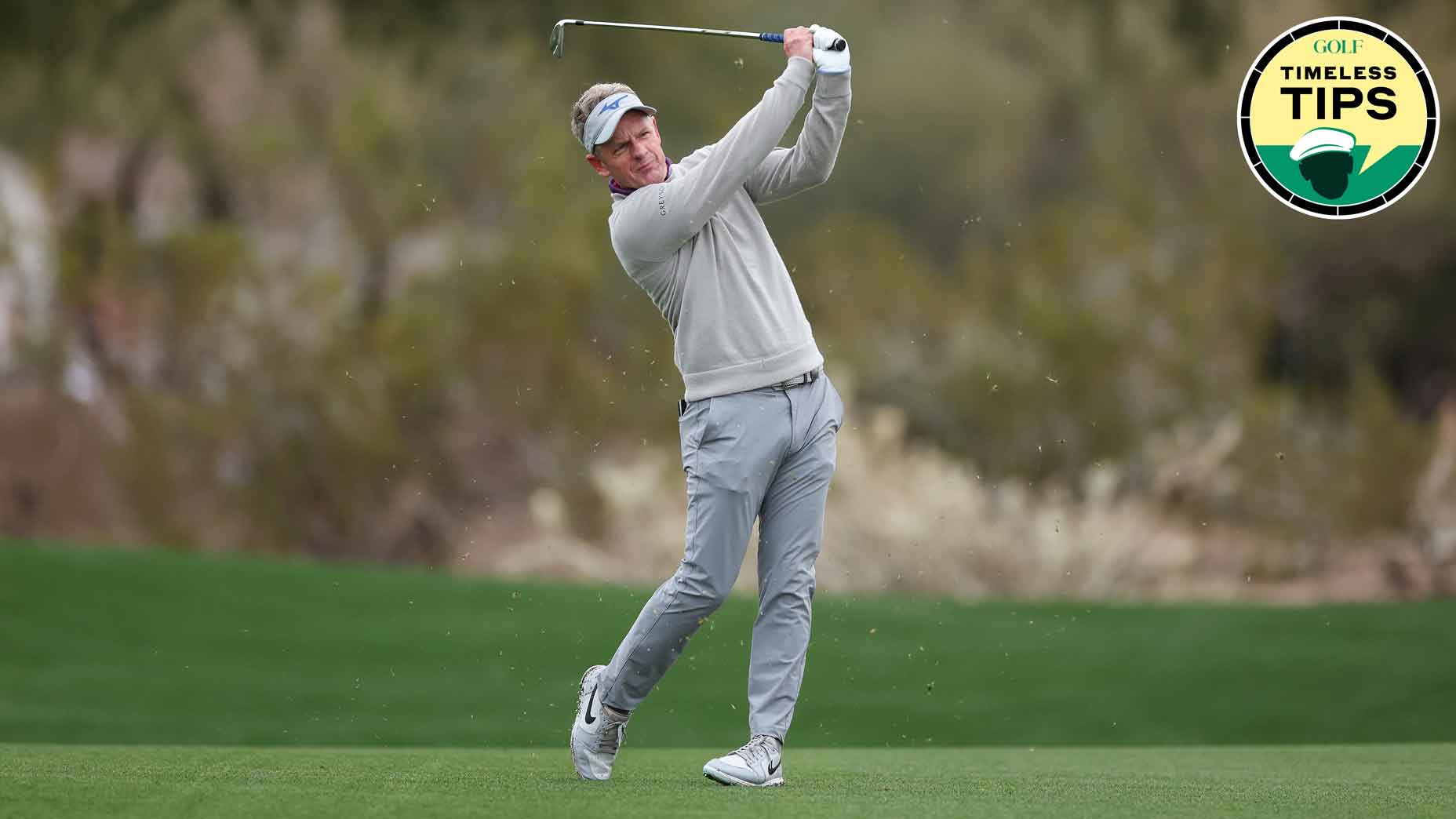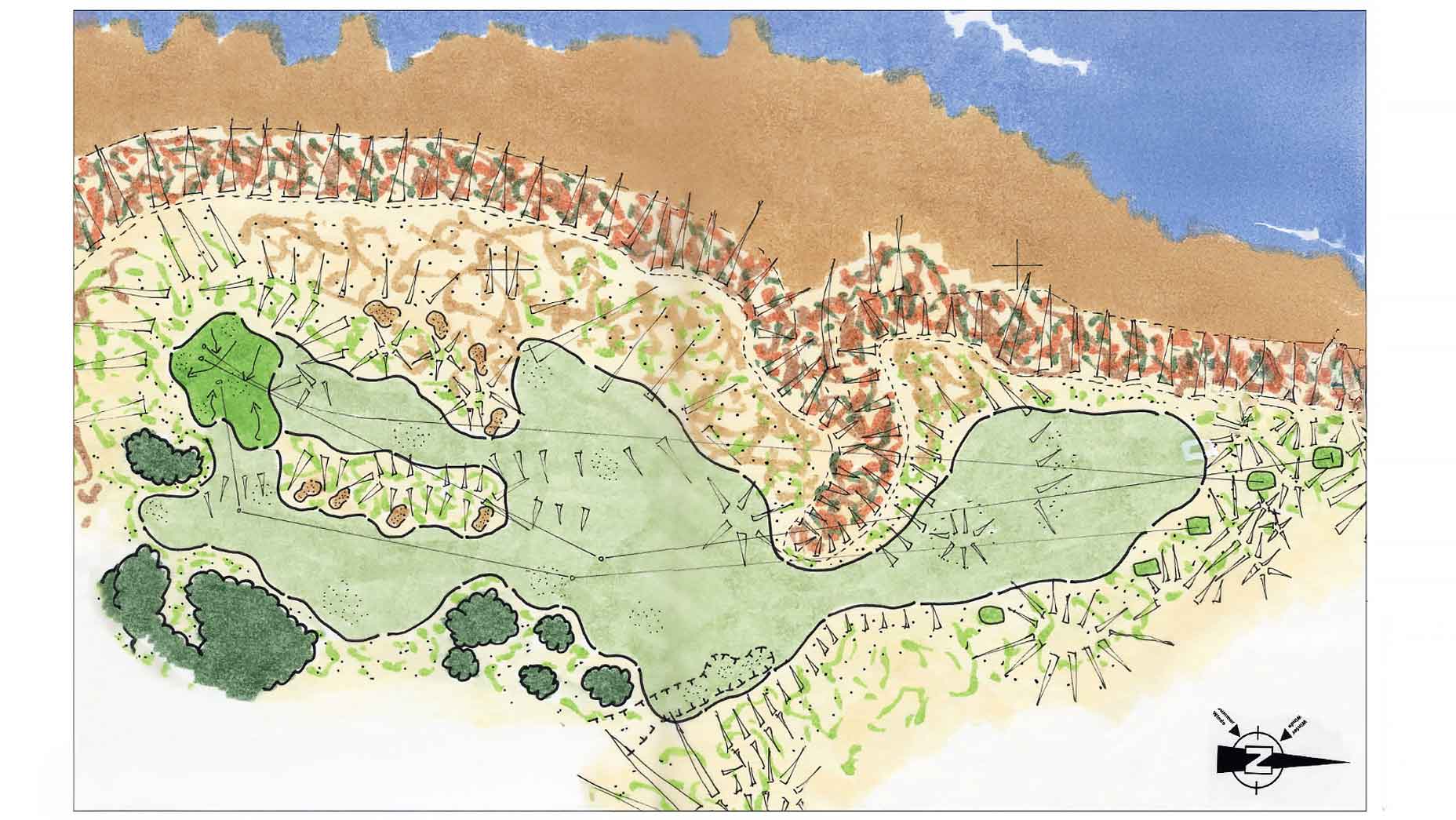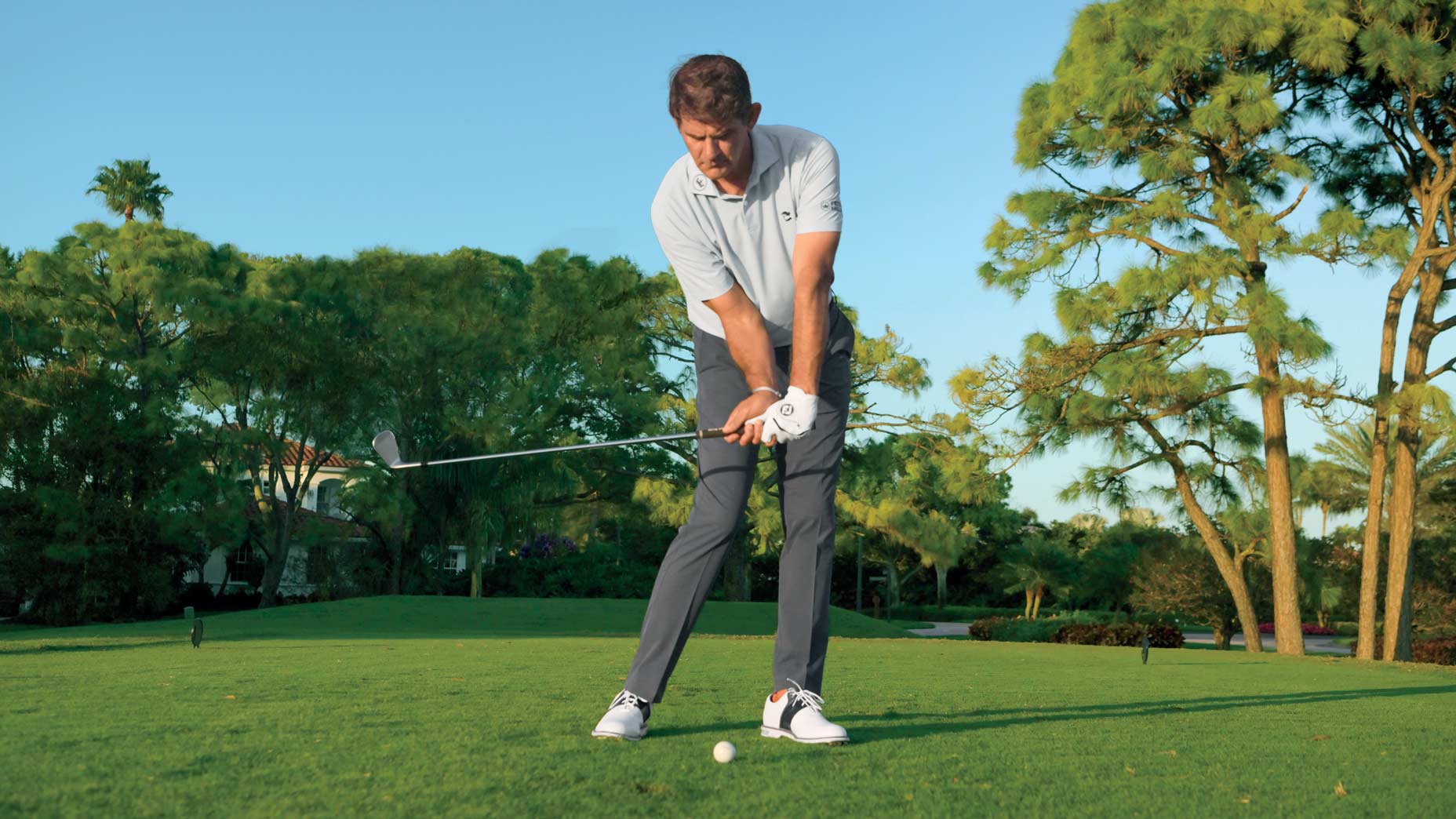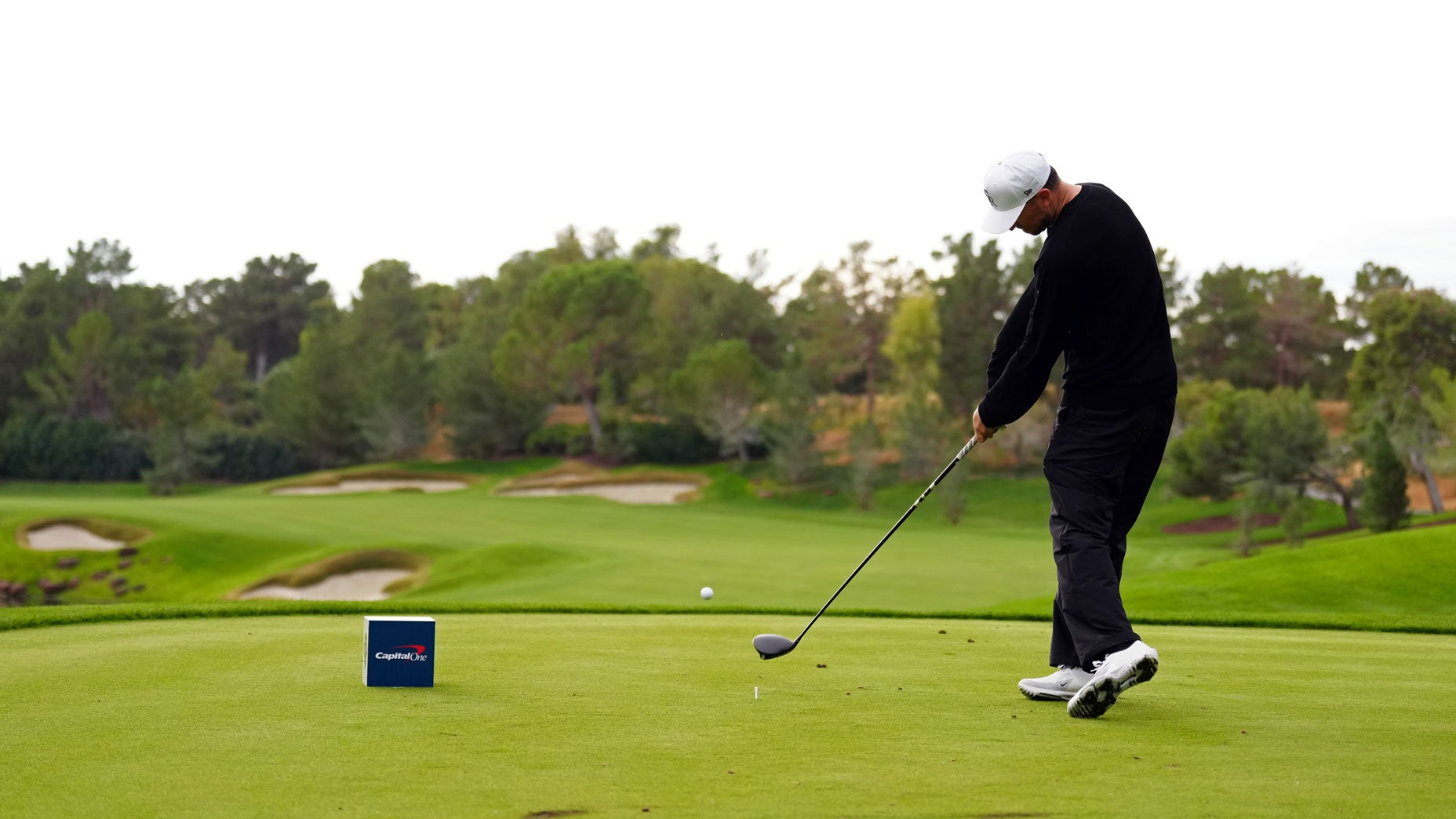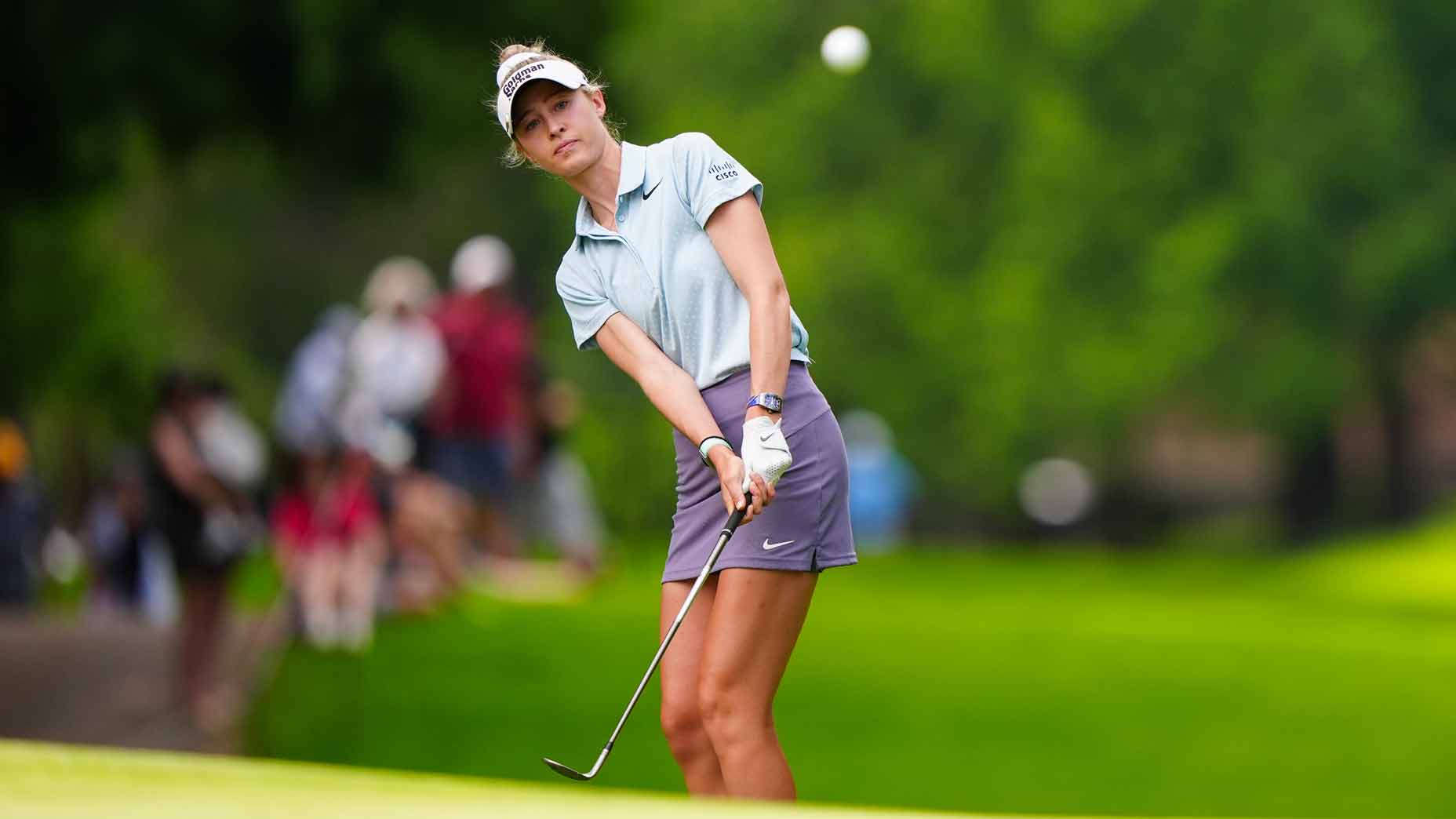Golf instruction is ever-evolving, but the best advice stands the test of time. In GOLF.com’s new series, Timeless Tips, we’re highlighting some of the greatest advice teachers and players have dispensed in the pages of GOLF Magazine. Today we hear from Luke Donald on his advice for hitting pinpoint iron shots from a story originally published in our January 2004 issue. For unlimited access to the full GOLF Magazine digital archive, join InsideGOLF today; you’ll enjoy $140 of value for only $39.99/year.
It’s become harder than ever to compete on the PGA Tour as a short-hitter, but at last week’s Mexico Open, Brain Campbell proved it’s still possible to have success with limited ball speed. Despite ranking as the shortest hitter on Tour entering the week, Campbell earned his first-ever Tour win. To make the win even sweeter for the short-hitter, he bested the longest hitter on Tour — Aldrich Potgieter — in a playoff to get his hands on the trophy.
“It’s hard to look at a guy next to you hitting it 60 to 80 yards past you,” Campbell said. “But you’ve really just got to stay focused on what you’re there to do and do the best you can.”
Campbell isn’t the first pro to find success despite lagging behind his competitors in the distance department. In fact, back in 2011, Luke Donald ascended to world No. 1 despite finishing the season ranked 147th on Tour in driving distance.
In honor of all golfers out there lacking in the distance department, we’re looking back at a few tips from one of the most successful short-hitters of all-time in Donald. Back in 2004, Donald shared a few of his tips with GOLF Magazine about how to stick it close with your irons.
Luke Donald’s pinpoint iron tips
By PGA Tour standards, my 275-yard average off the tee isn’t exactly John Daly-esque. But what I’ve learned that a sharp iron game can help me keep pace with the big hitters. I’ve always put a premium on my irons. In fact, I holed out the very first iron shot I hit on Tour — a pitching wedge for eagle at the 1999 Buick Challenge. And I still work hard to keep my iron play sharp. In the final round of the 2002 Southern Farm Bureau classic — my first Tour win — my 8-iron to the par-3 12th hole left a dent in the cup.
How can my iron game help you? In this article, I’ll discuss the swing keys I live by, from posture and swing shape to hitting the ball high or low. Give these tips a try and you may soon be throwing darts, too.
Address: Posture first
A pre-shot routine is critical to establishing good posture. I start by gripping down on the club with my right hand until my spine tilts slightly away from the target. Then, I bend toward the ball from my hips. I want to feel as if my shoulder are directly over my hips. To check this, I sometimes let my arms hang and make sure my palms line up with the creases on my pants.
After I set my posture, I aim the clubface and align my body, then check ball position, inching up or back depending on the shot. For long irons, I play the ball opposite the logo on my shirt; for mid irons, off my left ear; for short irons, just ahead of my sternum.
Backswing: Left shoulder low
My main backswing thought is to turn my left shoulder under my chin. My shoulders rotate on a diagonal plane, which helps me stay in my address posture. If I do this right, the club swings on the correct path and the clubface is square at the top, setting up the proper inside-out approach to the ball.
To work on your turn, find a slope and practice hitting balls below your feet. With the emphasis on staying down to reach the ball, you’ll keep your left shoulder low.
Starting down: Arms wide
From the top, I resist the urge to fire my hips or chest toward the target, letting my arms swing down first. This is key for me, as I have a tendency to get too aggressive with my hips, which makes the club drop behind me.
If your sequence is correct, you’ll swing down on a wide arc. And wider means more speed. To stay wide, try the pump drill. Start with your left arm parallel to the ground and swing to the top. Then, keeping your back toward the target, swing your arms down and try to increase the distance between your hands and shoulders. Stop when your hands are about waist high, and repeat.
Impact: Divot after strike
lf you maintain your forward tilt, the clubhead will swing down on the proper descending angle, cutting a divot after the ball. That’s how you hit pure irons. I focus on keeping my butt out and pointing my chest at the ball through impact. This allows me to extend my arms and swing down and through. Many amateurs do the reverse: They pull their butts in and spin their chests open. As a result, the club either gets stuck behind them (too shallow) or swings over the top (too steep).
In the end, my divots tell me all I need to know about my swing. If my divot is rectangular and about the same width as the clubhead, I made solid contact.
Low shot: drive the elbow
To keep an iron shot low, I position the ball two inches back in my stance, which delofts the clubface. I center my body weight and turn my left elbow out so it points toward the target. This promotes a flatter, more U-shaped swing through the hitting zone. The clubhead stays low after impact and the ball comes out with less backspin
High shot: Make a full release
For extra height, I play the ball two inches forward in my stance, which keeps my hands behind the ball and effectively increases the club’s loft. Then I swing back on a wide arc and focus ona high, full finish. This promotes an earlier release, with the wrists rechecking and the clubhead swinging upward shortly after impact. The shot flies high and stops quickly.
